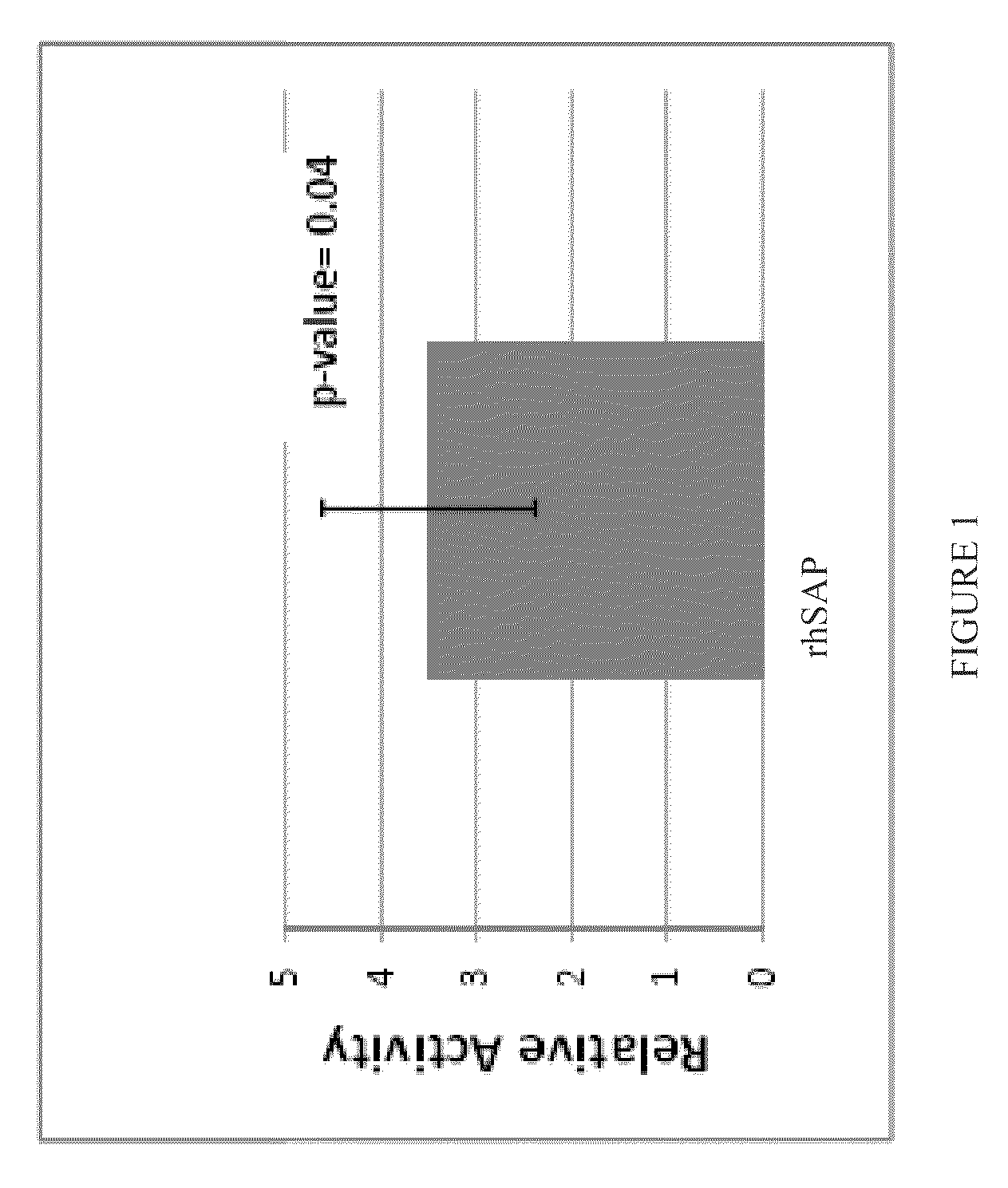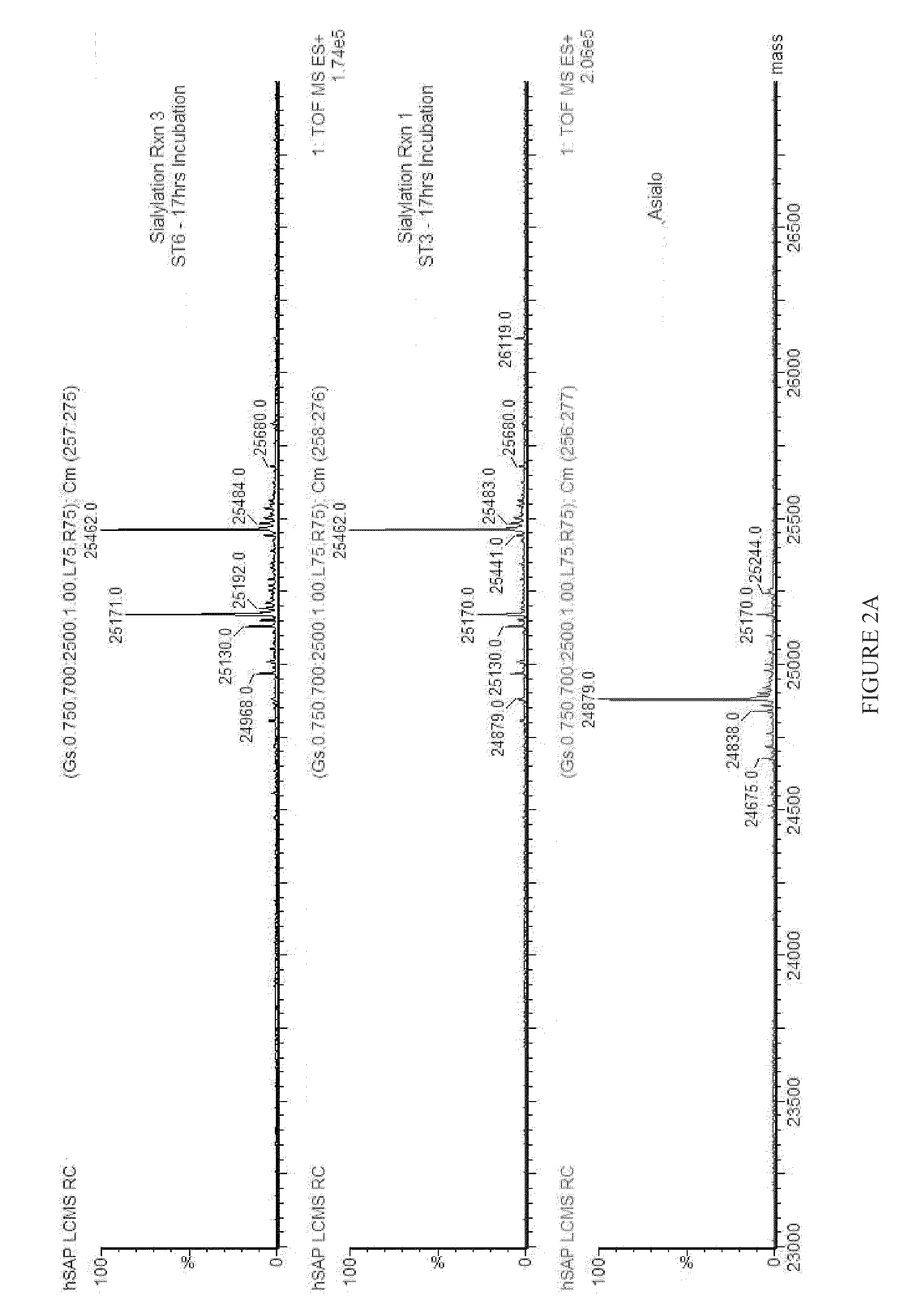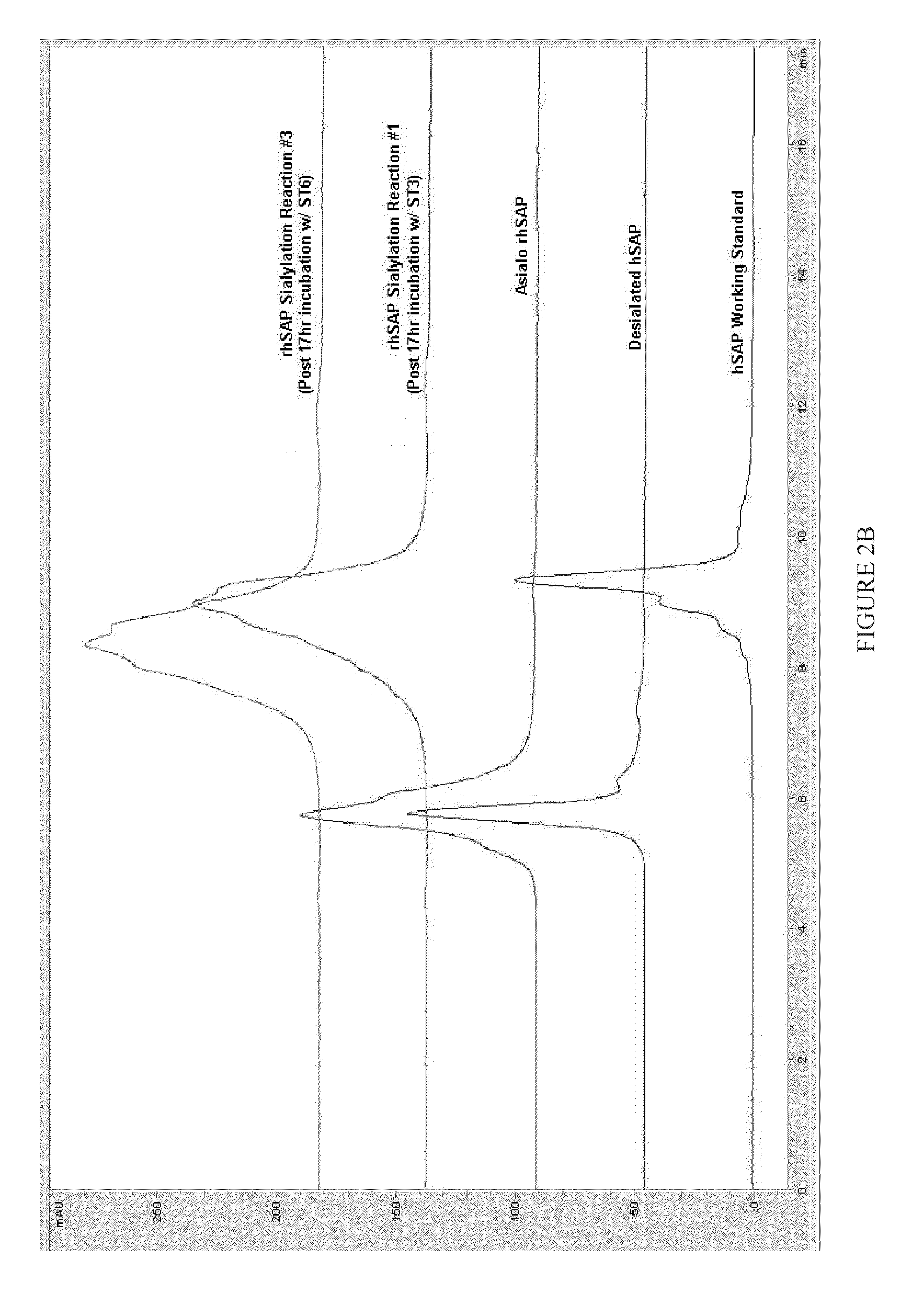Serum amyloid P derivatives and their preparation and use
a technology of serum amyloid and derivatives, which is applied in the field of serum amyloid derivatives and their preparation and use, can solve the problems of affecting the pharmacokinetics, safety, efficacy of a therapeutic product, and the difficulty of producing a protein therapeutic having the necessary potency and/or in sufficient quantity to be useful, and achieves the effects of enhancing one or more of in vivo stability, in vivo half-life, and protein complex formation
- Summary
- Abstract
- Description
- Claims
- Application Information
AI Technical Summary
Benefits of technology
Problems solved by technology
Method used
Image
Examples
example 1
Recombinant SAP is More Potent than Human Serum-Derived SAP
[0145]Recombinant human SAP isolated from CHO—S cells (rhSAP) and human serum-derived SAP (hSAP) were assayed for bioactivity using an in vitro bioassay. In this assay, monocyte enriched Peripheral Blood Mononuclear Cells (PBMCs) were incubated with varying concentrations of either rhSAP or hSAP for 96 hours. Following this incubation, resulting culture supernatants were removed and assayed by ELISA to quantify the amount of Macrophage Derived Chemokine (MDC) that was produced. MDC is produced by fibrocytes and therefore an indicator of monocyte differentiation into fibrocytes. By comparing the inhibitory concentration, 50% (IC50) of the sample to the hSAP reference standard, the relative potency of a SAP glycovariant can be determined. The result is expressed as an IC50 ratio of the sample versus the hSAP reference standard.
[0146]All SAP samples and standards were initially diluted to a concentration of 1.0 mg / mL in Supplem...
example 2
Modification of SAP Glycan Structures
[0151]Using in vitro glycoremodeling techniques, glycan moieties on a sample of recombinant human SAP (rhSAP) were modified to replace terminal α-2,3-linked sialic acid moieties with α-2,6-linked sialic acid moieties (FIGS. 2, A and B). Similarly, a sample of human serum-derived SAP (hSAP) was also modified to replace terminal α-2,6-linked sialic acid moieties with α-2,3-linked sialic acid moieties (FIGS. 2, C and D). In addition, as rhSAP isolated from CHO—S cells is only partially sialylated, a sample of rhSAP was treated to fully sialylate the attached glycan structures with α-2,3-linked sialic acid moieties (FIGS. 2, E and F).
[0152]Both rhSAP and hSAP (Calbiochem Cat#970549) were treated with a α-2,3,6,8,9-sialidase (Sigma Cat #N8271) to fully desialylate the polypeptides. After sialidase treatment for 17 hours, desialylated (i.e. asialo) rhSAP and hSAP were purified using phosphoethanolamine (PE) affinity and size exclusion (Sephadex 200 pre...
example 3
In Vitro Bioassays to Determine SAP Glycovariant Potency for Inhibiting Monocyte Differentiation into Fibrocytes
[0158]Glycoremodeled rhSAP and hSAP were assayed for bioactivity using the same in vitro bioassay described in Example 1. In brief, monocyte enriched peripheral blood mononuclear cells (PBMCs) were incubated with varying concentrations of an SAP polypeptide for 96 hours. Following this incubation, resulting culture supernatants were removed and assayed by ELISA to quantify the about of Macrophage Derived Chemokine (MDC) that was produced. The results were expressed as an IC50 ratio of the sample versus the hSAP reference standard and plotted as relative activity (relative activity of hSAP=1). All α-2,3-sialic acid linkage containing test materials are ≧2.4-fold more active than hSAP (FIG. 3). Equal mixtures of α-2,3- and α-2,6-linked sialic acid derivatives of SAP show intermediate activity levels between 100% α-2,6-linked and 100% α-2,3-linked SAP as expected (two rightmo...
PUM
| Property | Measurement | Unit |
|---|---|---|
| concentration | aaaaa | aaaaa |
| concentration | aaaaa | aaaaa |
| concentration | aaaaa | aaaaa |
Abstract
Description
Claims
Application Information
 Login to View More
Login to View More - R&D
- Intellectual Property
- Life Sciences
- Materials
- Tech Scout
- Unparalleled Data Quality
- Higher Quality Content
- 60% Fewer Hallucinations
Browse by: Latest US Patents, China's latest patents, Technical Efficacy Thesaurus, Application Domain, Technology Topic, Popular Technical Reports.
© 2025 PatSnap. All rights reserved.Legal|Privacy policy|Modern Slavery Act Transparency Statement|Sitemap|About US| Contact US: help@patsnap.com



